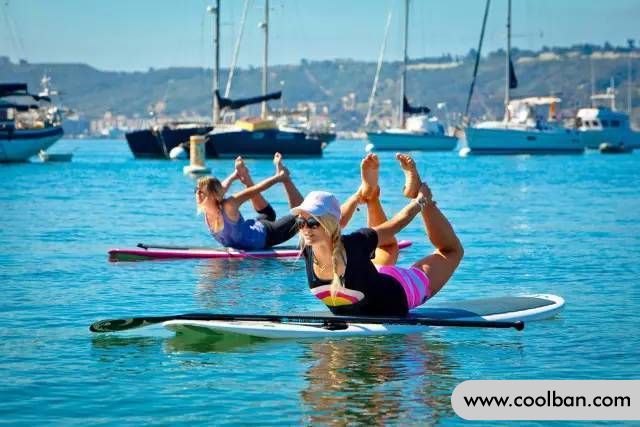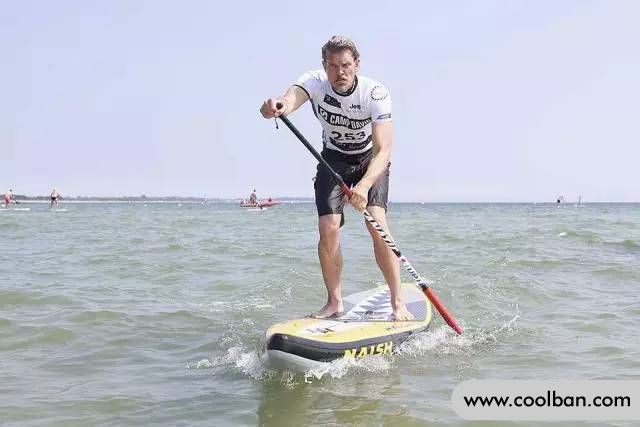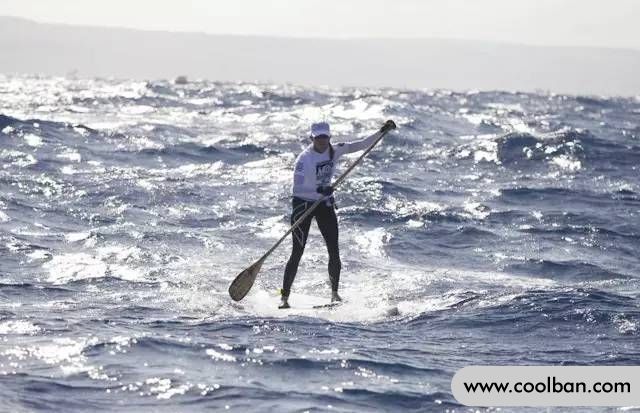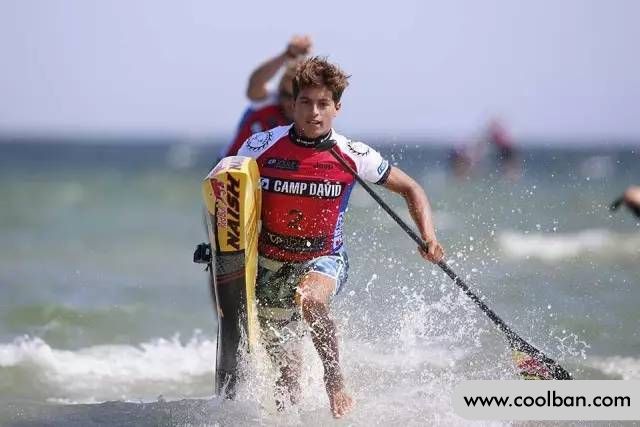Introduction to paddle board water sports
2022-05-22
When it comes to paddle boards, some friends may confuse it with surfboards. Although a paddleboard is similar in length to a surfboard, a paddleboard is not a surfboard!
The ease of use and variety of ways to play paddle boards have made this water sport popular around the world. This is a healthy aerobic exercise, water sports for all ages, and water sports for beginners.
What is a paddle board
Paddleboarding (SUP) is also known as stand-up paddle surfing. Initially, in order to manage a large number of students, the surfing instructor can get a better view by standing upright on the surfboard, which is convenient for observing the surrounding situation and is also conducive to swells coming from a distance.
The origin of the paddle board
Paddleboarding originated in the Hawaiian paddle surfing in the 1960s. In recent years, it has gradually swept the world. Paddleboarding has become one of the most popular water sports. Full name Stand Up Paddle, or SUP for short, is great for paddlers too!
Because its gameplay is simple and easy to play, there are many ways to play, such as walking, kneeling, sitting, standing, you can dive and swim at any time;
It is precisely because of its high engagement and low barriers to entry that even rookie players can get started right away. Paddleboarders can range from children to seniors, and even a water sport that your pet dog can play with.
The paddle board has a wider and thicker surface for greater buoyancy, making it easier for players to master balance, and also comes with paddles that allow you to experience the joy of paddling on a variety of waters.
Invite friends to soak up the sun, enjoy nature, and get a full-body workout at the same time.

Paddle board volume and weight
The paddle board should be chosen according to your body type.
If the paddle board doesn't match your weight, your board won't be able to drag you across the water.
When choosing a paddle board, the volume and load capacity of the board are two very important reference factors.
Volume:
The volume of a paddle can be expressed in liters. The buoyancy created by the volume of the paddle enables the board to carry heavy loads. The larger the paddle board, the more weight it can carry.
If the shortboard is wide and thick, it can have good buoyancy. Likewise, if the longboard is narrow and thin, buoyancy won't work.
Loading capacity of paddle board:
Each paddle has a certain load capacity. It is very important to know the load capacity of the paddle. If your weight is too heavy for your board, your board will have a deep draft and won't be prone to water skiing.

Paddle board equipment:
A set of paddle board sports equipment is divided into: paddle board [paddle board is divided into comprehensive, surfing, tourism, competition, yoga, inflatable, you can choose according to your needs]
Tail Fin [Tail fin can increase water control stability]
Jacket [The paddle of a paddle board usually has a jacket in the center of the rod to increase its strength]
Paddle rod [the choice of paddle rod is generally 15-20CM higher than that of the user]
Foot Rope【The foot rope can connect you to the paddle board, which is convenient for getting on the boat quickly when you fall into the water. At the same time, the buoyancy of the paddle itself can ensure the safety of the player to a certain extent]
Life jacket [check whether all functions are complete before entering the water, put an end to slack, and safety first]
Plate type:
When choosing a paddle board, consider: where to row, whether it's recreational or competition, novice or veteran.
Different types of paddle boards have different experiences. As the saying goes, if you want to do something good, you must first sharpen your weapon.
Short boards (under 2.8 meters) are suitable for surfing. Shortboards are more maneuverable than longboards. Generally, children's paddle boards are under 2.4 meters.
Ideal size for mid-board (2.8m-3.7m) multifunctional boards. Glide in the lake or surf in the sea.
Longboards (3.8m-4.3m) are suitable for competitions and water excursions. Longboards are faster and easier to slide out of a straight line than short and medium boards.
Wide boards (80cm or wider) Wide boards are more stable and easier to stand on than narrow boards. But the speed will be slower than the narrow board.
Narrow board (74cm-76cm) Narrow board is faster than long board, but less stable.

How to play the paddle board
Standing skills:
If it's your first time paddleboarding, it's best to choose calm water without boats and floating objects around.
At first, you will find it easier to kneel on the paddle board than to stand.
1: Put the paddle board in shallow water, stand next to the paddle board, the paddle is leaning against the edge of the board like a stand paddle, and insert the paddle page into the water.
2: Grasp the middle edge of the paddle with both hands and hold the paddle with one hand.
3: Kneel on the middle and back of the paddle, then lay the paddle flat on the paddle.
4: Kneel down and feel the balance point of the paddle. So that the head of the board does not float, and the tail of the board does not sink into the water.
5: Firmly hold one side of the paddle with your hand to stabilize it.
6: When you feel ready, stand on one foot, then stand up again with your knee on the paddle. Of course, you can also bring a friend to help you hold the paddle and get you up.

Paddle skills:
1: When sliding to the right, hold the lower part of the paddle with the right hand and the upper part of the paddle with the left hand.
2: The arc of the propeller head is facing away from you, which may seem unreasonable to your vision at first glance.
3: Keeping your arms straight, paddle with your body.
4: When paddling, push down with the upper hand.
5: Insert the paddle into the water first, then pull the paddle down to your ankles to get out of the water.
6: You can eat slowly at the beginning, and you don’t need to consume a lot of energy at the beginning.
7: At the beginning of the stroke, paddling with a small support force will make each stroke more efficient and farther.
8: If you want to maintain a straight line, row on both sides alternately, changing sides every 4-5 times.
9: When changing paddles, don't forget the upper and lower positions of the hands.

Paddle pose
Posture - standing
1: Keep your feet as balanced as possible, shoulder-width apart, and stand in the middle of the paddle.
2: Feet forward, knees bent, back straight.
3: Use your hips for balance, not your upper body.
4: Keeping the head and shoulders straight and stable, use the hips to position the body.
5: Look ahead, don't just stare at your feet.
posture - sitting
1: The posture of the newcomer, master the best balance, and play in the water with the approaching fish.
2: Straighten your feet to ensure smooth movement.
3: The sitting position is much easier, as long as the center of gravity is kept in the middle of the paddle.
posture - kneeling
1: Master the balance, exert the core strength to the extreme, speed is better than passion!
2: Kneel on the board with both knees, adjusting the position as needed until the board feels stable enough.
3: Keep your head and shoulders straight and adjust your body posture with your legs.
Posture - lying down
1: There is no most leisure, only more leisure
2: The paddle board can lie on it and the whole sky is in front of you.
Once you've mastered your balance, it's time to enjoy waterskiing.
The ease of use and variety of ways to play paddle boards have made this water sport popular around the world. This is a healthy aerobic exercise, water sports for all ages, and water sports for beginners.
What is a paddle board
Paddleboarding (SUP) is also known as stand-up paddle surfing. Initially, in order to manage a large number of students, the surfing instructor can get a better view by standing upright on the surfboard, which is convenient for observing the surrounding situation and is also conducive to swells coming from a distance.
The origin of the paddle board
Paddleboarding originated in the Hawaiian paddle surfing in the 1960s. In recent years, it has gradually swept the world. Paddleboarding has become one of the most popular water sports. Full name Stand Up Paddle, or SUP for short, is great for paddlers too!
Because its gameplay is simple and easy to play, there are many ways to play, such as walking, kneeling, sitting, standing, you can dive and swim at any time;
It is precisely because of its high engagement and low barriers to entry that even rookie players can get started right away. Paddleboarders can range from children to seniors, and even a water sport that your pet dog can play with.
The paddle board has a wider and thicker surface for greater buoyancy, making it easier for players to master balance, and also comes with paddles that allow you to experience the joy of paddling on a variety of waters.
Invite friends to soak up the sun, enjoy nature, and get a full-body workout at the same time.

Paddle board volume and weight
The paddle board should be chosen according to your body type.
If the paddle board doesn't match your weight, your board won't be able to drag you across the water.
When choosing a paddle board, the volume and load capacity of the board are two very important reference factors.
Volume:
The volume of a paddle can be expressed in liters. The buoyancy created by the volume of the paddle enables the board to carry heavy loads. The larger the paddle board, the more weight it can carry.
If the shortboard is wide and thick, it can have good buoyancy. Likewise, if the longboard is narrow and thin, buoyancy won't work.
Loading capacity of paddle board:
Each paddle has a certain load capacity. It is very important to know the load capacity of the paddle. If your weight is too heavy for your board, your board will have a deep draft and won't be prone to water skiing.

Paddle board equipment:
A set of paddle board sports equipment is divided into: paddle board [paddle board is divided into comprehensive, surfing, tourism, competition, yoga, inflatable, you can choose according to your needs]
Tail Fin [Tail fin can increase water control stability]
Jacket [The paddle of a paddle board usually has a jacket in the center of the rod to increase its strength]
Paddle rod [the choice of paddle rod is generally 15-20CM higher than that of the user]
Foot Rope【The foot rope can connect you to the paddle board, which is convenient for getting on the boat quickly when you fall into the water. At the same time, the buoyancy of the paddle itself can ensure the safety of the player to a certain extent]
Life jacket [check whether all functions are complete before entering the water, put an end to slack, and safety first]
Plate type:
When choosing a paddle board, consider: where to row, whether it's recreational or competition, novice or veteran.
Different types of paddle boards have different experiences. As the saying goes, if you want to do something good, you must first sharpen your weapon.
Short boards (under 2.8 meters) are suitable for surfing. Shortboards are more maneuverable than longboards. Generally, children's paddle boards are under 2.4 meters.
Ideal size for mid-board (2.8m-3.7m) multifunctional boards. Glide in the lake or surf in the sea.
Longboards (3.8m-4.3m) are suitable for competitions and water excursions. Longboards are faster and easier to slide out of a straight line than short and medium boards.
Wide boards (80cm or wider) Wide boards are more stable and easier to stand on than narrow boards. But the speed will be slower than the narrow board.
Narrow board (74cm-76cm) Narrow board is faster than long board, but less stable.

How to play the paddle board
Standing skills:
If it's your first time paddleboarding, it's best to choose calm water without boats and floating objects around.
At first, you will find it easier to kneel on the paddle board than to stand.
1: Put the paddle board in shallow water, stand next to the paddle board, the paddle is leaning against the edge of the board like a stand paddle, and insert the paddle page into the water.
2: Grasp the middle edge of the paddle with both hands and hold the paddle with one hand.
3: Kneel on the middle and back of the paddle, then lay the paddle flat on the paddle.
4: Kneel down and feel the balance point of the paddle. So that the head of the board does not float, and the tail of the board does not sink into the water.
5: Firmly hold one side of the paddle with your hand to stabilize it.
6: When you feel ready, stand on one foot, then stand up again with your knee on the paddle. Of course, you can also bring a friend to help you hold the paddle and get you up.

Paddle skills:
1: When sliding to the right, hold the lower part of the paddle with the right hand and the upper part of the paddle with the left hand.
2: The arc of the propeller head is facing away from you, which may seem unreasonable to your vision at first glance.
3: Keeping your arms straight, paddle with your body.
4: When paddling, push down with the upper hand.
5: Insert the paddle into the water first, then pull the paddle down to your ankles to get out of the water.
6: You can eat slowly at the beginning, and you don’t need to consume a lot of energy at the beginning.
7: At the beginning of the stroke, paddling with a small support force will make each stroke more efficient and farther.
8: If you want to maintain a straight line, row on both sides alternately, changing sides every 4-5 times.
9: When changing paddles, don't forget the upper and lower positions of the hands.

Paddle pose
Posture - standing
1: Keep your feet as balanced as possible, shoulder-width apart, and stand in the middle of the paddle.
2: Feet forward, knees bent, back straight.
3: Use your hips for balance, not your upper body.
4: Keeping the head and shoulders straight and stable, use the hips to position the body.
5: Look ahead, don't just stare at your feet.
posture - sitting
1: The posture of the newcomer, master the best balance, and play in the water with the approaching fish.
2: Straighten your feet to ensure smooth movement.
3: The sitting position is much easier, as long as the center of gravity is kept in the middle of the paddle.
posture - kneeling
1: Master the balance, exert the core strength to the extreme, speed is better than passion!
2: Kneel on the board with both knees, adjusting the position as needed until the board feels stable enough.
3: Keep your head and shoulders straight and adjust your body posture with your legs.
Posture - lying down
1: There is no most leisure, only more leisure
2: The paddle board can lie on it and the whole sky is in front of you.
Once you've mastered your balance, it's time to enjoy waterskiing.
